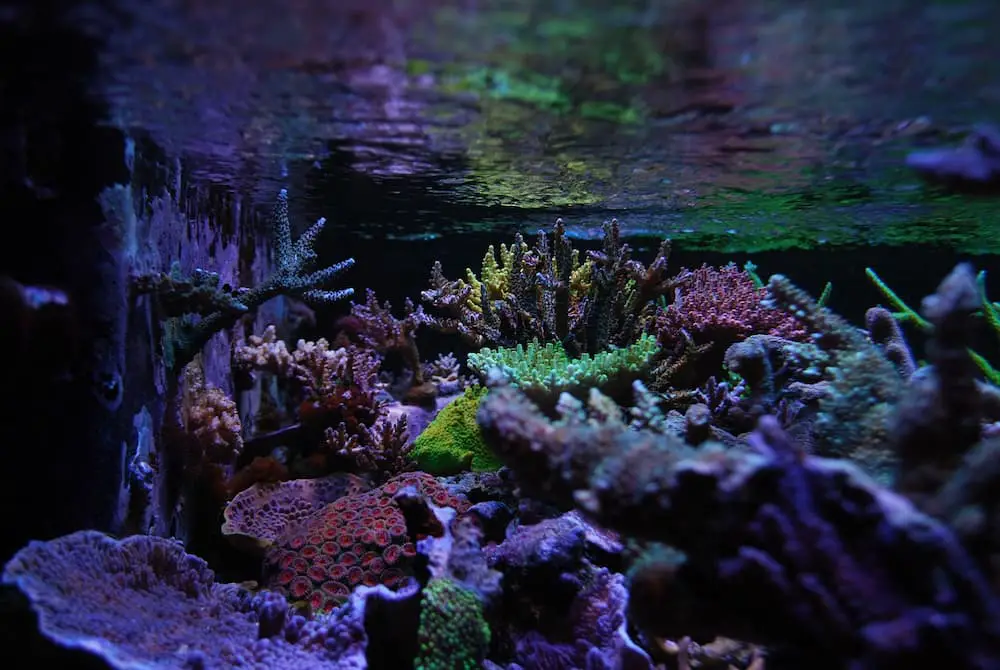Signs Of Low Magnesium In A Reef Tank
A common sign that magnesium levels are low is when it becomes impossible to stabilise calcium and alkalinity levels. This is most often the case when dosing calcium and alkalinity daily, trying to keep both within normal ranges, but one or both continuously drop too low.
Why It Happens
Proper magnesium levels prevent the precipitation of calcium carbonate, which is critical for maintaining the proper levels needed for calcium and alkalinity. This can be seen if you notice a white cloud of precipitation while dosing, as calcium carbonate is likely precipitating out of the solution. If this happens, check your magnesium levels immediately. Other signs of low magnesium levels include coralline algae bleaching, bleaching of small polyp stony corals and tissue loss on large polyp stony corals.
Causes
One of the most common causes of low magnesium is failing to use salt that’s specifically designed for reef tanks that contain the proper magnesium levels. Another cause for low magnesium levels is a lack of regular water changes.
How to Fix:
- Tip #1: Perform regular water changes with salt that’s designed for reef tanks.
- Tip #2: It’s important to test magnesium every other week, then dose when needed to maintain levels between 1250-1350ppm.
Ideal Magnesium Level For A Reef Tank
It’s important to know the perfect magnesium level for your tank so that you can determine the level of magnesium deficiency in your tank and how much magnesium you need to add, if any.
The level of magnesium in your tank’s water can be tested with a test kit. These test kits can be bought in any pet shop or online from a reputable brand. These test kits measure the level of magnesium (ppm).
The natural magnesium level in seawater is approximately 1285 ppm. Given that standard, the appropriate magnesium level in a reef tank should be between 1250-1350 ppm.
The good news is that if the magnesium level in your reef tank remains between 1200-1400 ppm, then it doesn’t usually cause any major issues. It’s completely fine for the tank inhabitants to live within that range of magnesium.
Although, if your tank’s magnesium level drops below 1000 ppm and it becomes consistent, then you’ll need to raise the magnesium level to keep the reef tank stable.
How To Raise Magnesium In A Reef Tank
Now that you know why maintaining the right magnesium level is so important, it’s also important to know how to raise magnesium in your reef tank if it gets below 1000 ppm. Below are two of the most effective ways to boost the magnesium level in your aquarium:
Change The Water
If you’re experiencing a big drop in magnesium level, then changing the water is the easiest way to bring the right magnesium level back.
Start by changing 20% of the aquarium water each week. If your tank has stony corals, then 10% will be fine. Although, this amount of water change will work better for nano reef tanks.
Buying refined magnesium for commercial can be very expensive. As a result, there are brands that produce and sell salt mixes with lower magnesium levels. That’s why it’s important to choose a reputable brand to buy. Make sure to choose salt mixes that are designed for reef tanks that contain the right amount of alkalinity, magnesium, and calcium.
It’s important to note that water changes on a large scale in cases where the tank is large can be really troublesome and time-consuming. Even worse, you may also experience a flood of water on the floor of your room!
Therefore, if you have a larger reef tank and you are not enthusiastic enough to go for larger or frequent water changes, then you should go for dosing magnesium supplements instead.
Using Magnesium Supplements
Dosing the magnesium supplements to the water changes is also a very useful way of raising the magnesium level.
Although, you should know that adding more than the required amount of magnesium might cause problems as well. Doing this can even produce worse results for the reef tank than the inadequate magnesium issue. So, make sure that you test the water before and after dosing the magnesium supplement each time.
When you buy the magnesium supplements, make sure that you’ve chosen a reputable brand like Seachem. Seachem’s Reef Advantage Magnesium supplement is widely used among reefers and ensures a blend of magnesium chloride and magnesium sulfate in the water.
You can also buy liquid supplements instead of the powdered ones. But this can result in higher shipping costs.
When you want to do your first dose, start by applying half of the recommended dose from the supplement once per week. For example, if you’ve bought Seachem’s magnesium supplement, you can start with 1 teaspoon of the supplement for every 20 gallons of water volume.
If you’re applying the powdered magnesium supplement, make sure that you’ve dissolved 1 teaspoon of powder into 1 cup of freshwater.
Adding Magnesium
For freshwater aquariums, you can add magnesium for plants. Most commercially available aquarium fertilisers contain trace elements like magnesium, so you’ll rarely have to go out of your way to just add magnesium. For saltwater aquariums, the salt mix contains all of the trace elements corals need to survive. If you have enough corals, they can use up all of the magnesium between water changes. Pet shops that cater more towards reef hobbyists will usually carry magnesium supplements. Make sure to always follow the manufacturer’s recommendations for dosing.
Testing
In a freshwater aquarium, you never have to test for magnesium. Therefore, if you have plants and fertilise them, you can consider the problem solved. However, in a saltwater aquarium, the water chemistry is more complicated where you need to monitor magnesium levels to make sure that you’re not overdosing. Magnesium should also be tested when you test for calcium.









